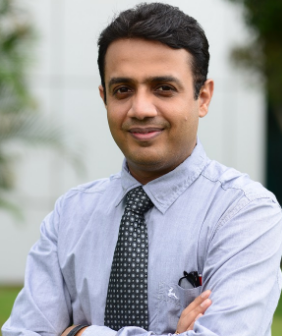“India has the capability to develop its own innovative gene therapy solutions for thalassemia and sickle cell disease”
February 20, 2024 | Tuesday | Views
Dr Gaurav Kharya, Founder & Director of Delhi-based startup Cellogen Therapeutics, is working intensively on developing indigenous CAR T cell therapy for blood cancers in India so that the cost of treatment can be brought down. Also working as a Clinical lead at the Centre for Bone Marrow Transplant and Cellular Therapy & Senior consultant- paediatric hematology, oncology and immunology, Apollo Hospitals, New Delhi, Dr Kharya spoke to BioSpectrum about how Cell and Gene therapy is the future of medicine.
Cell and gene therapy is gaining popularity. Could you please explain what it is and specify your specific focus within this field?
Cell and gene therapy is a futuristic and innovative form of treatment, which can be used to treat various diseases, including cancers, blood disorders, and genetically acquired diseases.
T-cells are the primary defense cells in the body. In certain cases, these cells lose their defensive power, which can lead to cancer or other infections. Through gene therapy, we can strengthen these T-cells again, enabling them to identify and kill specific organisms or cancer cells.
This approach is particularly effective for treating viral infections and cancers. Our work is focused on utilising this therapy to treat blood cancers. This approach is commonly known as the CAR T-cell approach (Chimeric Antigen Receptor T-Cell Therapy).
In gene therapy, we modify or edit defective genetic loci. For example, conditions like Thalassemia or Sickle Cell disease occur because a specific locus in our genes, known as the HBB cluster, is defective. Through gene therapy, we can correct this defect by editing the defective segment of DNA.
Gene therapy has shown promising results in treating Thalassemia and Sickle cell disease, which are the most common red cell disorders worldwide. It can also be used to treat various metabolic disorders.
How prevalent are these disorders in India?
Thalassemia and Sickle cell disease are quite prevalent in India. Although we lack a proper registration mechanism in the country, it is estimated that approximately 10,000 children are born with Thalassemia and 30,000 children with Sickle cell disease each year. This adds to the existing burden of these diseases. In Thalassemia, patients require regular blood transfusions in order to have a normal life expectancy. However, implementing life-long blood transfusion is a tremendous burden for the child and their family, making it impossible to continue in most cases. Approximately 90% of cases fail to receive optimal supportive care, and patients face numerous issues.
In Sickle Cell disease, patients can experience multiple complications such as pain crises, strokes, acute chest syndrome, and frequent infections. Most patients with sickle cell disease do not survive beyond their second decade. The burden that these two diseases place on the healthcare system is substantial, not only in our country but globally as well.
Is there any definitive treatment available for these diseases?
There are two treatment options:
Firstly, Bone Marrow Transplantation (BMT), which is a standard treatment for both Thalassemia and sickle cell disease. If the patient is in good health and a suitable donor is found, BMT is the preferred option. This treatment can significantly improve the quality of life. Currently, BMT is the only curative option available. The outcomes of BMT have evolved and are exceptional, whether or not a Human Leukocyte Antigens (HLA), identical or partially matching family donor is available.
The second option is medication. To date, two drugs have been approved by the US FDA for the treatment of these diseases. However, the cost of these drugs ranges from $2.1 to 3.5 million, making them unaffordable for the majority of Indians.
The innovative Gene Therapy, which is currently at the developmental stage worldwide, could be the third solution in the near future. As a country, we have the capability to develop our own innovative gene therapy solutions for Thalassemia and Sickle cell disease.
How much would these treatments cost for patients outside of India and in India?
In the US, where gene therapy been approved for Thalassemia and Sickle cell disease, treatment cost ranges from $3 to 4 million (over Rs 30 crore).
However, by producing these therapies domestically, we are not bound by the pricing structures proposed by multinational companies. We can bring the cost down to $50,000 (approximately Rs 40 lakh) per patient. As the treatment becomes more popular, we can progressively reduce costs, making it affordable for a larger number of patients.
Even BMT, which in the US and Europe costs $700,000-800,000, it only costs between $20,000-30,000 at most centres in our country. The cost may vary slightly depending on the patient's age and the type of transplant.
With Natco pharmaceuticals recently investing in your company, do you believe that Indian pharmaceutical companies are open to accepting these new therapies?
Several pharmaceutical companies have recently recognised the importance of accepting and supporting new-age therapies. They have come to realise that if they don't do so, they will fall behind in this race. It is becoming clear that cell and gene therapy is the future not only for hematological and oncological diseases, but also for diseases such as cardiac diseases and diabetes.
Gunjan Sharma
(gunjan.sharma@mmactiv.com)










